150 Newton class: Lifejacket test: 16 models compared
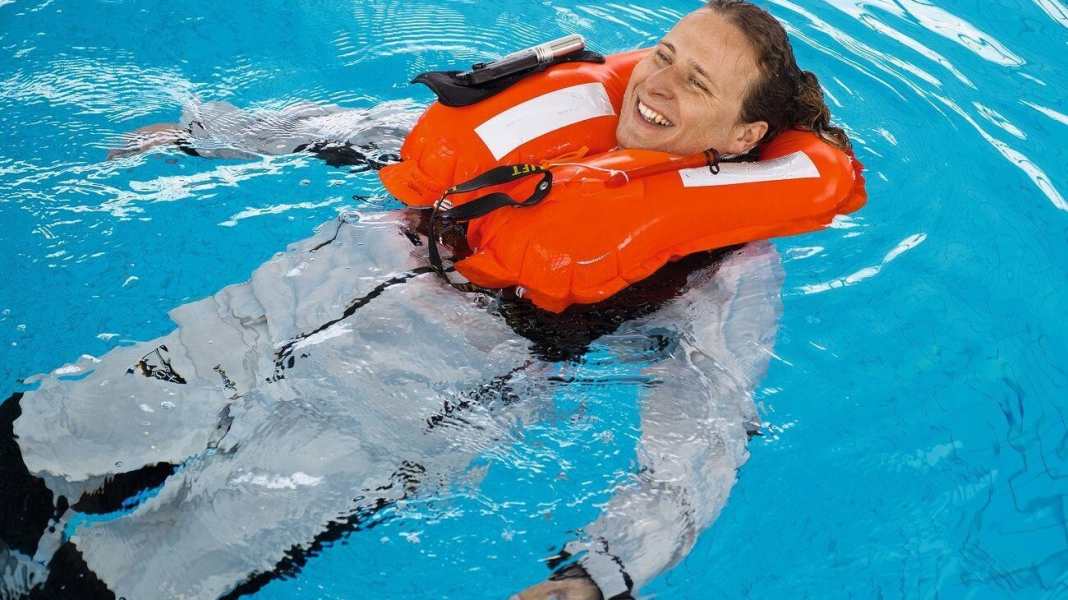
Good and cheap - or more expensive and safer, large or small? If you're looking for a lifejacket, there's plenty to choose from. Around 15 suppliers are represented on the German market. And usually with significantly more than one model - so there is plenty of choice.
The standardised classification according to buoyancy and intended use provides a point of reference. EN ISO 12402 specifies the levels 150 Newton and 275 Newton for sea areas - whereby the classes are named after the respective minimum buoyancy. However, the waistcoats usually have more volume, which the manufacturers emphasise in the product names for advertising purposes.
Waistcoats of the 150 Newton level are considered basic equipment for seagoing yachts; according to the standard, they should be unconscious-proof and suitable for general use. In this context, unconsciousness-proof means that the wearer's mouth and nose are reliably kept above water and that an unconscious person floating in the water is turned or held in a supine position.
The sticking point here is the wording "general application". Although the standard explicitly refers to weatherproof sailing clothing, the waistcoats in the test procedure only have to turn unconscious test subjects in swimwear onto their backs.
In practice, however, the waistcoat is often worn with oilskins. This inevitably causes air pockets to form in the trousers and under the jacket, which often provide as much buoyancy as a 150 Newton lifejacket, but unfortunately on the back and thus counteracting the required function of the waistcoat. Reliable turning into a position safe from passing out is then out of the question.
Nevertheless, the 150 Newton waistcoats have their raison d'être, as there is no need to fear immediate unconsciousness every time you go overboard. In addition, the fall is usually influenced by the railing, which means that the sailor either lands on his back in the water or at least receives a turning impulse. Accordingly, our test person was dressed in oilskins and sailing shoes, as is usual in practice, and let himself fall backwards into the water.
This is how we tested
The practical test was divided into two sections: on dry land and in the water. All waistcoats were weighed beforehand, and the workmanship of the harness and adjustability were assessed at the edge of the pool. It was favourable for the evaluation if the waistcoat could be easily adjusted by the wearer when put on. An important point was the wearing comfort, with particular attention paid to the position of the waistcoat on the neck. Ideally, the vest should be wide across the back without pressing on the neck.
In the second part, our tester (height 1.80 metres, weight 85 kilograms) always dropped into the water in the same way. We photographed and assessed any particularities during deployment, such as slippage or the buoyancy chambers being constricted by the shell, as well as the swimming position and wearing comfort in the water, paying particular attention to the distance between the buoyancy chambers. If there is a gap, it forms a channel that directs waves directly onto the mouth and nose of the MOB and can lead to choking or suffocation.
The distance to the lower lip and to the water was measured using an auxiliary construction on the edge of the pool, from which the freeboard of the waistcoat could be calculated - the greater the distance, the better. Equipment such as the spray cap and lighting were also assessed.
And this is how the individual models fared:
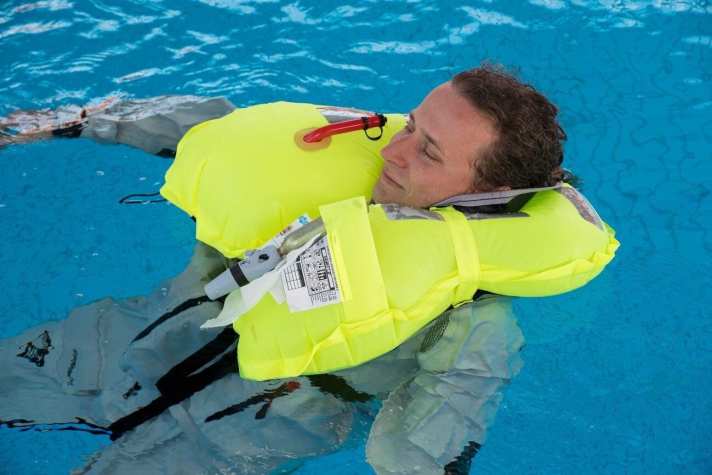
Marinepool 220N Sport
The waistcoat sits well on the shoulders. The belt is easy to adjust. Buoyancy on the cartridge side is twisted, so it opens significantly. Can be easily corrected. Three out of five points for the Marinepool 220N Sport.
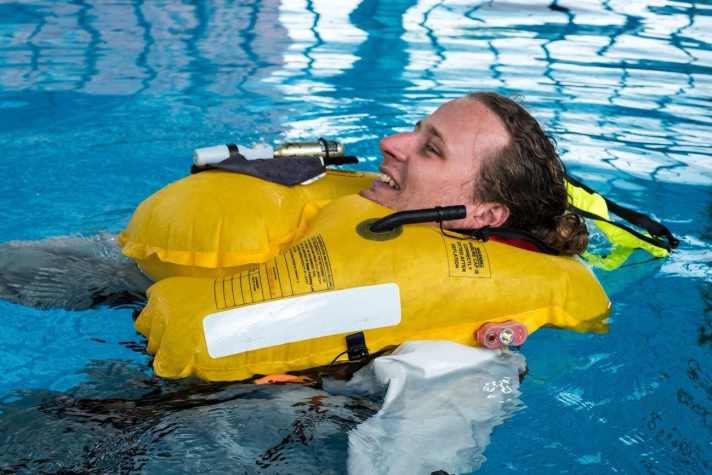
Seago Active 190
Sits well on the shoulder, neck is free. Belt is difficult to adjust. The Seago Active 190 Inflates slowly and continues for a long time. Then a lot of pressure on the bladder. Chokes and presses against the larynx. The signal light is unfavourably positioned. Four out of five points.
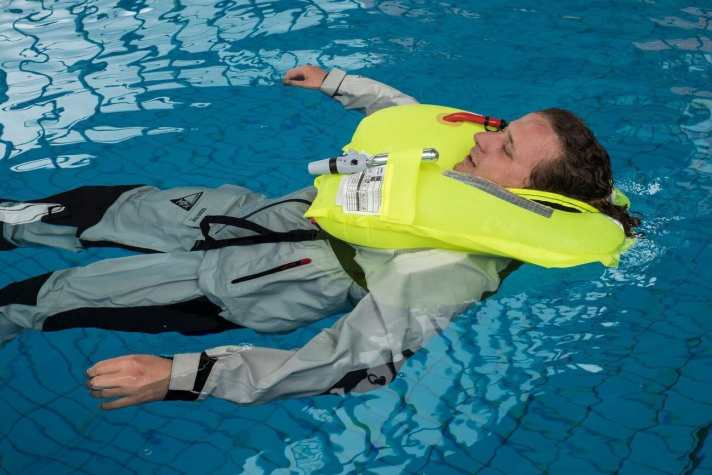
Compass Aero 3D 165 N
The waistcoat sits well on the shoulders. The belt can be adjusted to suit. Buoyancy chokes, cartridge side twisted when released. Can be easily corrected. Four out of five points for the Compass Aero 3D 165 N.
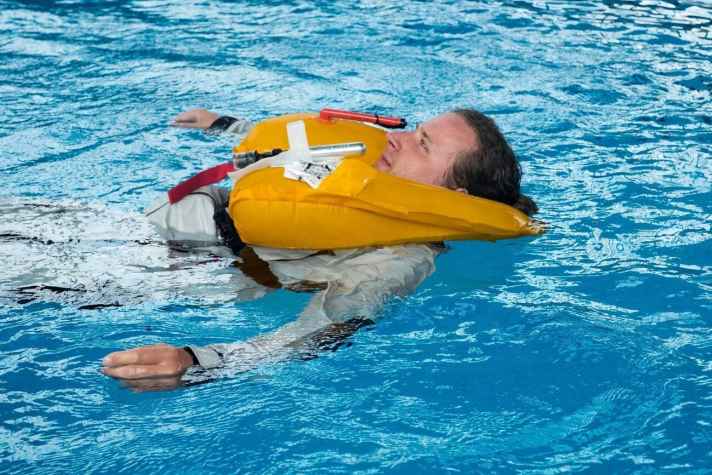
Besto Comfort Fit
Sits well on the shoulders but is snug around the neck. Belt can be adjusted moderately. Buoyancy opens up significantly in the water, creating a wave channel. Squeezes relatively little. No cartridge status display. The Besto Comfort Fit achieves three out of five points.
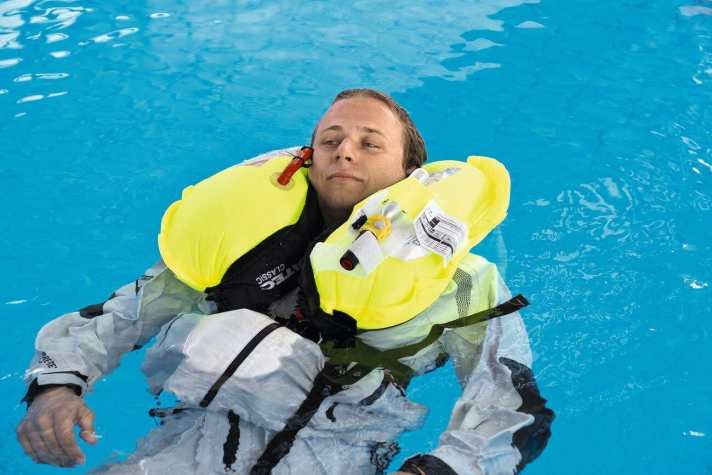
SVB Classic 165
The waistcoat sits relatively close to the neck. Belt is difficult to adjust under load. Buoyancy sits a little high and opens significantly. Can be easily corrected, then the bladder sits well and closes. The Seatec SVB Classic 165 is the most favourable model. Three out of five points.
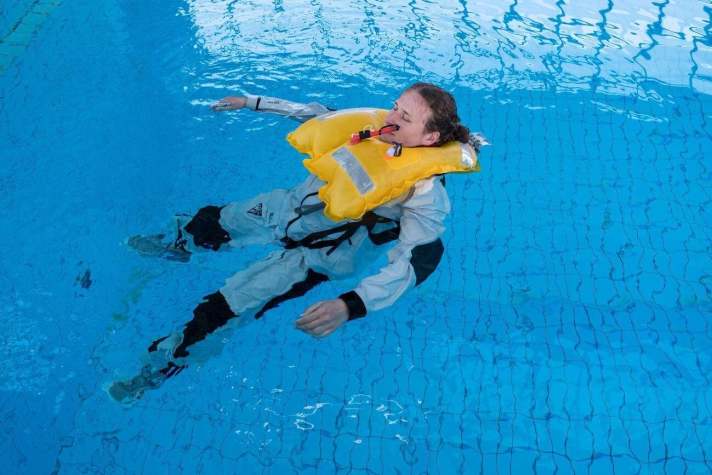
Crewfit 180N Pro
The price-performance tip: comfortable fit on the shoulder. Very easy to adjust. Buoyancy very well positioned. Closes well, the Crewfit 180N Pro achieves four out of five points.
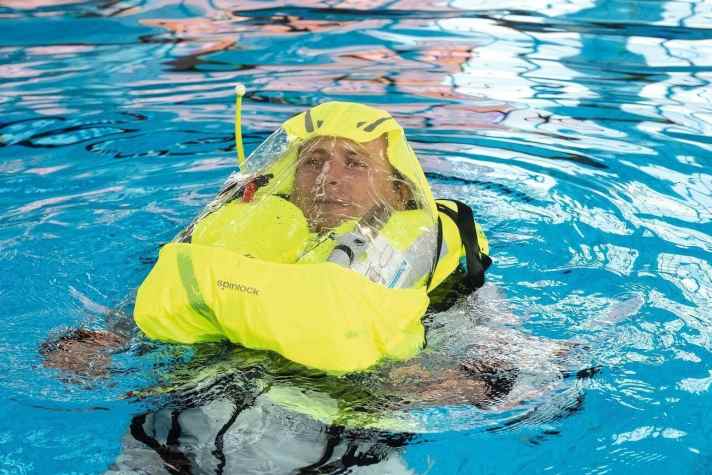
Spinlock Deckvest 5D
Very comfortable to wear. Very good and easily adjustable buoyancy. Sits a little high, but can be corrected, then good position. Very good spray cap. Five-year guarantee. Three basic sizes. Best harness system. Heavy, therefore the Spinlock Deckvest four out of five points.
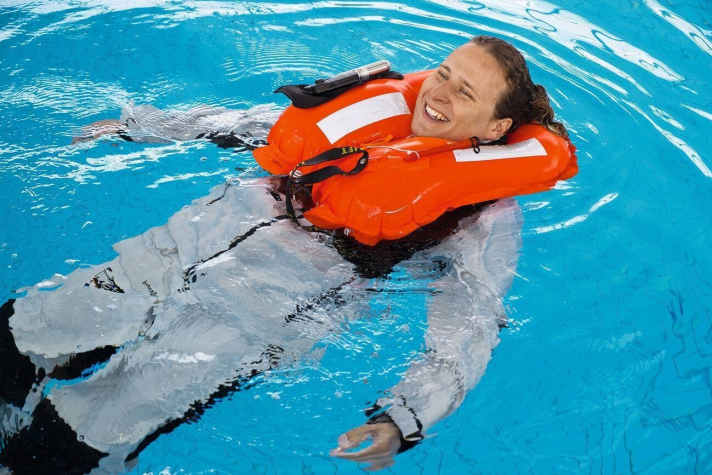
Kadematic 150 SC
Conventional, somewhat neck-heavy fit. The harness is easy to adjust. Buoyancy sits well even without a crotch strap. Recovery loop is easy to reach. Three out of five points for the Kadematic 150 SC.
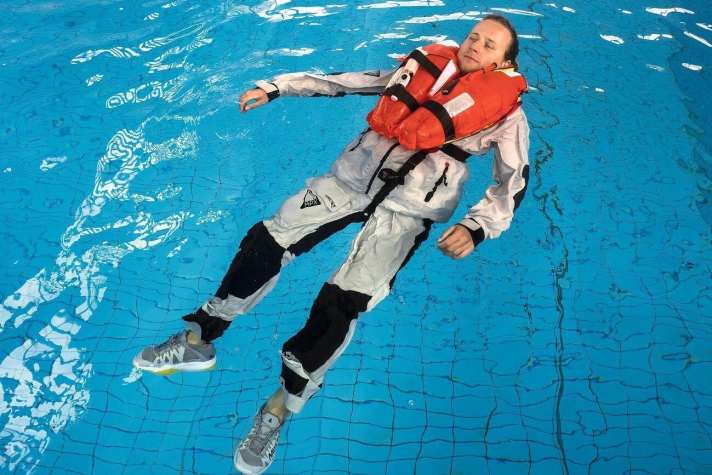
Baltic Legend 190
Sits wide on the shoulders, the basic setting should be found before putting it on. Loose can be stowed away. Buoyancy is a little high, presses into the cheek, but can be corrected. Floating position good, three out of five points for the Baltic Legend 190.

Helly Hansen Safe Racing
Very comfortable fit of the Helly Hansen waistcoat. Strap is very easy to adjust. Buoyancy is difficult to open as the cover gets stuck on the trigger. The bladder sits well after manual release. Spraycap also fits well. Recovery strap is easy to grip. Heavy, three out of five points.
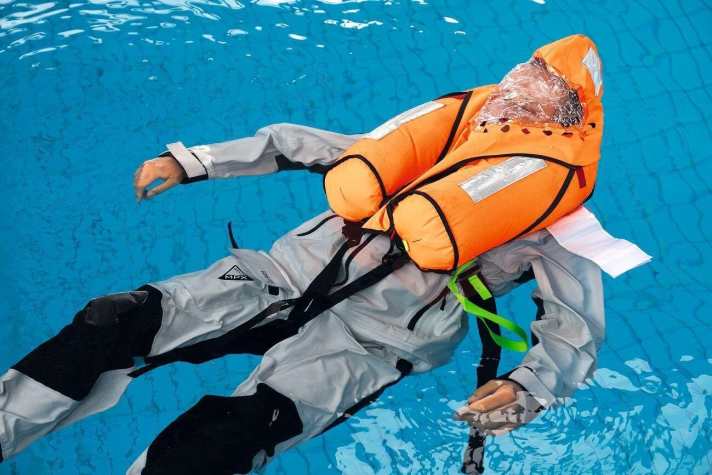
Plastimo SL 180 Lifejacket with Harness
The waistcoat fits very comfortably and the chest strap is very easy to adjust. Buoyancy is very comfortable. The optional spray cap costs only 26 euros, is easy to fit and closes the wave channel, which is otherwise very pronounced. Three out of five points for the Plastimo SL 180 .
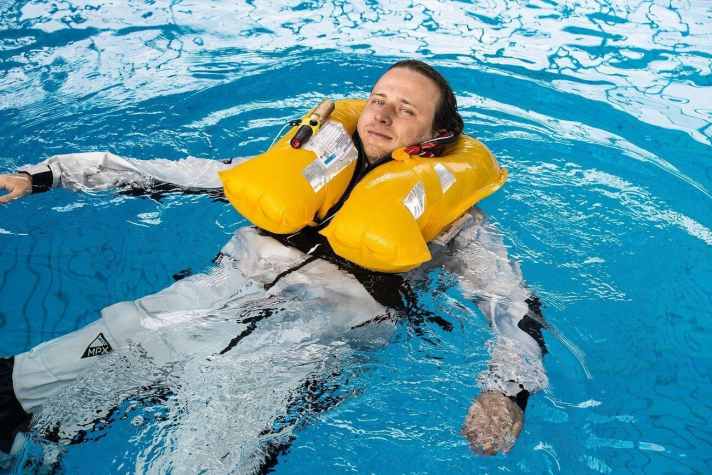
Spinnaker
The fit is similar to a regatta waistcoat and must be pulled over the head. The harness is easy to adjust, the buoyancy opens up considerably but hardly puts any pressure on. Three out of five points.
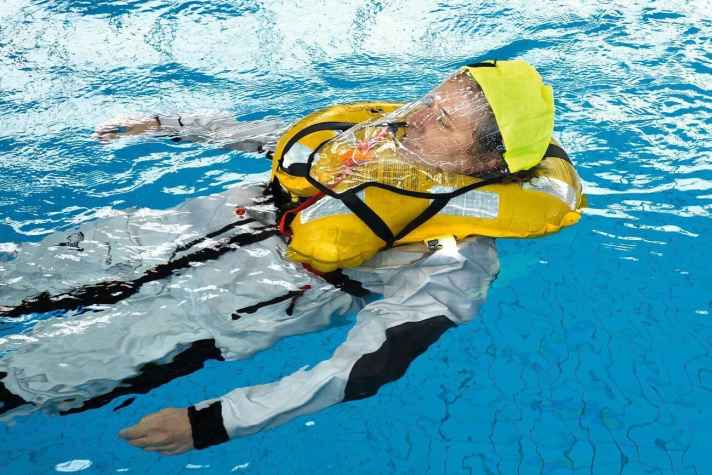
Sostechnic Sport ADV
Pleasantly compact, the Sostechnic waistcoat Sits well on the shoulders. The strap is easy to adjust. Buoyancy is somewhat twisted, so the chin pad cannot fulfil its function optimally. Spraycap is very simple, but fulfils its purpose. Four out of five points.
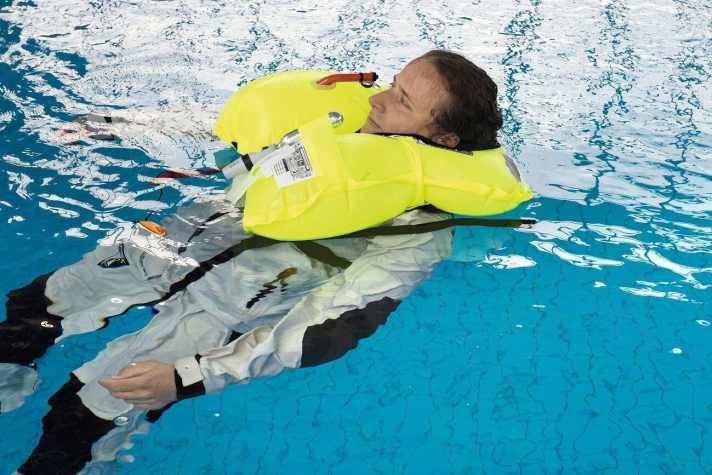
Sostechnic Sport 220
Sits well on the shoulders. The harness is relatively easy to adjust for a single system. Buoyancy sits well, but needs to be adjusted slightly. The recovery loop floats in the water, but is somewhat covered by the bladder. Four out of five points for the Sostechnic waistcoat.
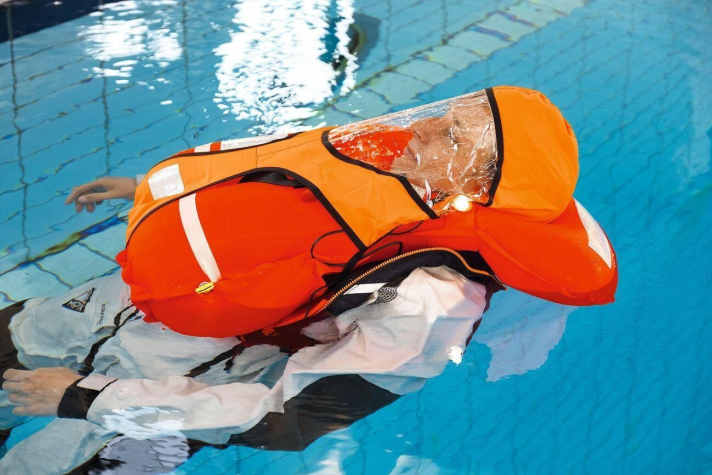
Secumar Survival 220
The test winner. Sits well on the shoulders. Strap is easy to adjust. Loose end can be stowed away. Long buoyancy with very good flotation and comfortable position, very good spraycap. Heaviest waistcoat with a very solid buckle. Four out of five points for the Secumar Survival 220 .
You can read the entire test report with all the details in the PDF download (subject to a charge).

